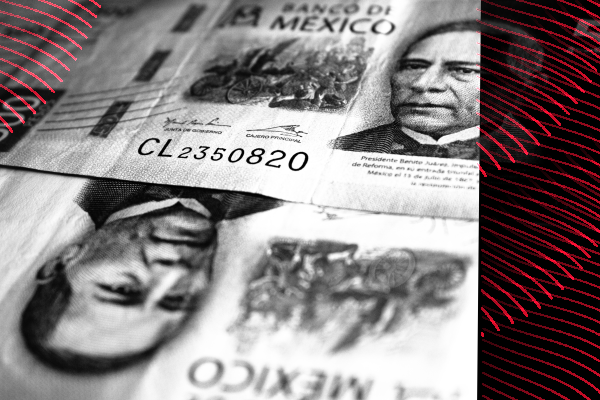Trading Signals 05/02 – 09/02
Mexican Peso: Strengthening Causes.

At the end of 2022, analysts predicted the peso’s exchange rate to be 20.16 against the US dollar. However, as of today, it is trading around 16 – 17 pesos per US dollar. What is the reason behind the strengthening of the Mexican currency and what are the prospects for the USD/MXN pair? Let’s try to understand with the help of our experts.
Why is The Mexican Peso So Successful in 2023?
As with several other currencies, the exchange rate of the Mexican peso is closely linked to the dynamics of the US dollar, which is influenced by the policies of the US Federal Reserve (Fed). The peso is a leader in the Forex market and has seen a significant increase in its value against the dollar by more than 10% since the beginning of the year, outperforming currencies in Eastern Europe and the Brazilian real.
As of Wednesday, July 26th, the Mexican peso is trading at 16.98 per US dollar, its highest level since July 2017. This is due to the increasing divergence between the monetary policies of the US and Mexico. The unexpected drop in US inflation to a three-year low of 3.0% in June has reinforced the belief that the Fed might halt its monetary policy tightening cycle, keeping the interest rate at 5.25%.
On the other hand, Banxico (Bank of Mexico) raised its interest rates to a record high of 11.25% in March and kept it unchanged in June, despite data showing that annual inflation had decreased more than anticipated. As a result, some investors seeking higher returns have shifted to the Mexican peso, taking into account the weakness of the dollar and challenges in the US economy. The peso was already under considerable buying pressure, as the high-interest rates attracted carry trade investors.
Mexico’s close proximity to the US makes it highly attractive to foreign companies looking to establish factories targeting the American market and diversifying production away from China. This has increased demand for the local currency. Additionally, the stable state of the US economy has led to an increase in money transfers from Mexican immigrants.
Furthermore, a positive factor for the Mexican peso is the growth of foreign direct investment in the Mexican economy in 2022, reaching record levels with a 12% increase, totaling $35.29 billion. Increased export earnings have also contributed to the strengthening of the national currency.
Mexico has become a leader in trade volume with the US, with trade reaching $196.7 billion in the first quarter of 2023, an 8% increase compared to the same period in 2022. Investors are also taking into consideration the predicted recession amid high inflation in the US and the recovery observed in the Mexican economy following the increase in the benchmark rate by the Bank of Mexico.
Features of The Mexican Economy
Modern Mexico is one of the most economically developed countries in Latin America, possessing a diverse resource base and a multi-faceted economy. Compared to other Latin American countries, Mexico underwent an agrarian reform that did not abolish land ownership but allowed for the capitalist development of agriculture.
Mexico was among the first Latin American countries to nationalize land and establish a state sector actively participating in the country’s economy. Currently, Mexico ranks 13th in the world in terms of GDP (around 8,000 dollars per capita), comparable to countries like Poland, Estonia, and South Africa.
The majority of electricity in the country is generated by thermal power plants. Geothermal and solar stations also operate on an industrial scale. The main industrial sectors include engineering, petrochemicals, oil refining, and metallurgy.
Foreign companies have set up factories and transport infrastructure in Mexico. It is expected that in the coming decades, major industrial producers will relocate to the country, with affordable and skilled Mexican labor becoming a significant driver of the region’s economy. US companies are already shifting production to neighboring countries such as India, Bangladesh, Pakistan, among others. However, Mexico appears to be the preferred choice for providing inexpensive yet skilled labor for American businesses.
Mexico has significant potential and numerous opportunities to transform itself from a second-world country into a developed nation that collaborates with both the US and China. However, only time will tell whether these prospects will materialize in reality.
Technical Analysis
According to technical analysis, significant selling of the US dollar against the Mexican peso has been observed since the beginning of the year, starting from the level of 19.30. The target for the downward movement was to retest the lows of late 2015 and reach 16.7 Mexican pesos per US dollar. In the long-term perspective, the currency pair USD/MXN may continue to decline and test the level of 16.44.
If the exchange rate halts at the reached levels, a consolidation phase is possible, where the upper resistance levels for selling the US dollar against the Mexican peso would be 17.96, 18.54, and 19.28, which were the starting points for the selling activity this year.
Technical analysis relies on historical price and volume data to forecast future market movements. However, it’s important to note that market conditions can change, and technical analysis is not an absolute guarantee of future outcomes. There is always a risk involved in financial market investments, and decisions should be made considering all factors and risks.
Oil: A Review of Early 2024
China’s Economy: Early 2024
Simple Strategy for Beginner Traders

